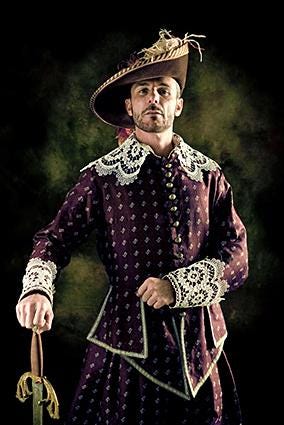With ‘Why your law firm can’t innovate‘ Ken Grady adds to the exploration of BigLaw and innovation on Dialogue (1). As Ken puts it: “…the lament is there: why don’t large law firms innovate?” Ken offers four well-argued strategies to address the challenge.
General Electric pitches itself as an innovation hub. Amazon brought us many new ideas about retailing. Google, well, any company that thought about bringing the world the internet through hot air balloons obviously thinks outside the box. Amazon has changed how almost every consumer product is sold. Facebook has re-invented communication.
What do these companies have in common? They are big, really big. And yet, they bring us innovations. Some of the innovations are born within the walls of the company and they purchase others. Growing large has not stopped them from pushing the envelope.
Innovation in the legal industry is greater now than at any other time in the history of the industry. Go on AngelList and look at the number of companies tagged “Startup” and “Legal” (427). Or, watch the tweets fly back and forth on Twitter about the latest, greatest startup an industry observer saw at a conference. Go to Europe and you will see legal industry startups in every country.
But the lament is there: why don’t large law firms innovate? We have many theories. There is a new idea circulating that may give us a clue why large law firms don’t innovate. At the same time, this clue serves as a warning for those hiring lawyers from large law firms. The story starts with Elon Musk.
The Real Iron Man
Elon Musk is the poster boy for those who aspire to become world-class entrepreneurs. In his mid-40’s, he has accomplished with several companies what most entrepreneurs dream of doing with one. Heck, they even based a movie character on him. Tony Stark of Marvel’s Iron Man franchise has many similarities to Musk and Musk has a cameo appearance in one of the movies.
Musk was one of the team behind PayPal. He brought us the world’s most valuable car company, Tesla. He puts solar panels on our roofs (now in the form of shingles) through Solar City. And, of course, he is re-taking space through his company SpaceX (another leader is Jeff Bezos’ Blue Origin tying us back to Amazon and innovation). Add to those companies other ideas including hyperloops and underground highways.
Musk has sufficient encomiums to fill a decent-size library. I won’t add another. But we should ask (and others have asked) a simple question — why has he been so successful at bringing us innovation? Why do we have reusable rockets that can land on small platforms bobbing in the ocean and electric cars that can re-charge at the local supermarket? Is it just that the technology has arrived and Musk is in the right era?
Having an idea at the right time or ahead of the times plays a role in whether many ideas are stillborn. Leonardo da Vinci designed a helicopter, but the technology to build a helicopter did not arrive for centuries. Edison was spot on with his timing. Ford as well. Were they just the lucky individuals chosen by fate to get credit for critical ideas, or did they add something to the mix?
Understanding why Musk or any modern polymath succeeds is art, not science. But understanding that Musk, Steve Jobs, Bill Gates, and a long list of successful innovators have life-long habits of building knowledge across many domains points us to a new view: to innovate, it may be better to be both an expert and a generalist.
The Expert’s Paradox
Michael Simmons, a social entrepreneur, blogger, and columnist, advocates a different theory of innovation based on a term “coined by” Orit Gadiesh, chairman of the consulting firm Bain & Company (her title, she has not gone to the gender-neutral “chairperson”). Simmons argues part of what makes Musk an innovator is his “expert-generalist” approach to the world. Gadiesh believes she and others like her are expert generalists. Another term used to describe these individuals is “T-shaped.”
These individuals have deep knowledge in at least one area (the “expert” or vertical leg of the T) and knowledge spread across many other areas (the “generalist” or horizontal bar of the T). David Guest first used the term “T-Shaped” in a 1991 editorial, saying:
This type of rounded personality is also sought in other branches of the same theory, which prizes individuals known as T-shaped People: These are a variation on Renaissance Man, equally comfortable with information systems, modern management techniques and the 12-tone scale.

The T-shaped person concept has spread beyond IT into many areas, even law. Amani Smathers brought the T-shaped lawyer to the legal industry in her presentation at a Reinvent Law conference.
Gadiesh describes the modern Renaissance man, her expert-generalist, as:
“…someone that can see trends and patterns and integrate what he knows. To me the modern Renaissance man is curious, interested in different things. You have to be willing to ‘waste time’ on things that are not directly relevant to your work because you are curious. But then you are able to, sometimes unconsciously, integrate them back into your work.”
The expert is easy to find and understand. We have them throughout all industries and substantive areas. But most experts stay in their area of expertise. That is a defining characteristic of the expert — one who spends their time focused on a single area.
The generalist refers to someone who develops the “T” leg. They go to areas outside their expertise; they ply their trade in other fields. At Bain, a healthcare consultant will venture into media consulting. Doing so, she brings ideas from one area to the other and takes back to her new ideas to her home domain. She cross-fertilizes ideas and that drives innovation.
Expert-generalists do more than spend time working outside their area of expertise, they educate themselves in other areas. Gadiesh reads 100 books each year. Musk read two books a day growing up. Bill Gates reads 50 books a year. If you want to be a business leader, read. If you want to be successful, read.
The Lawyer As Anti-Innovator
For decades, lawyers have become those experts who focus on their areas and never venture outside. At first, the shift from a general practice to a specialized practice happened because clients wanted specialists. How did we get there? It started with the billable hour.
As lawyers billed by the hour, a practice that took off in the 1960’s, they raised the curtain on what they did all day. Most in-house lawyers started in law firms, so there weren’t many secrets. Still, having it laid out in black and white in an invoice brought home to clients what lawyers did all day. It also raised a question: If one lawyer must do research to answer a question and another can answer it without research, aren’t I better off with the second lawyer? There it was — efficiency creeping into legal services.
To meet that “no research” challenge, law firms told lawyers to focus, focus, focus. It wasn’t enough to be a litigator, you had to be a securities law litigator. Better yet, become a 10b-5 securities law litigator. That lawyer read every case, article, rule, regulation, and interpretation written. Ask a question and you got an answer, on the phone, from the specialist (though bar associations still prohibit use of labels such as “expert” or “specialist” in almost all cases).

Specialists created the right environment for more specialists and within a decade or two, the only generalists wandering the halls were the senior partners who grew up under a different paradigm.
There were trade-offs. As a general counsel, I would get on a call with the company’s outside counsel to discuss the terms of an M&A agreement. I was treated to a string of specialists signing on and off as we flipped through the terms. IP specialist on then off as the antitrust specialist came on. Antitrust specialist off as the environmental specialist joined. By the end of the call, I had spoken with 10 or more specialists.
In theory, the outside firm’s corporate lawyer, who stayed on the line through each specialist, was the continuity factor. Often, she acted as scribe while the firm’s specialists and I grappled over wording. Ask the corporate lawyer a question and you would hear “well, I would have to go with so-and-so’s advice since he is the firm’s go-to guy for M&A environmental matters.” So-and-so would, of course, defer to the corporate lawyer on any issue outside the narrow environmental law slice since the corporate lawyer had the “big picture.” If your deal crossed a country’s border, the specialist lawyer headcount soared.
We had other reasons for excess-specialization. Lawyers dislike risk. As an expert, you reduce risk through increased knowledge of your field. As a generalist, you increase risk; you don’t know everything about those other fields.
Most lawyers perceive generalists as having low value (low billing rates). To make the big bucks, you must be the specialist.
By giving up the generalist view, lawyers have given up that ability to see across industries, across legal domains, and across applied fields. Lawyers have become the anti-innovators, capable of producing highly technical documents, but little to no strategic insight. Lawyers can help you (inefficiently) execute your plan. Lawyers are not the first stop for those who want to develop the plan. In Simmons’ view, the move by lawyers to experts and away from generalists robbed them of the chance to become innovators
We Are Not Alone
Tempting as it may be to lay the scourge of specialization at the feet of the legal profession, we are not alone in over-indulging on experts. As world complexity increased and before technology could do much to help people, industries responded by driving specialization. A person could absorb only so much, but by specializing the person could absorb more within narrower and narrower fields.
Specialists became the professional precursor to narrow AI — skilled at one narrow thing, but unable to do anything else.
We created a feedback loop that infected education. As the World Economic Forum says:
The more specialised our workforce becomes, the less capable we are of seeing how our industry relates to other industries. We also become less capable of inventing something to fit the knowledge gap between one industry and the next.
Specialisation of the workforce has been driven by a system called “academic inflation”. Where certain jobs used to require only a high school certificate, they now require a bachelors degree, a masters degree or a PhD. Employers have begun demanding greater and greater qualifications even for the most junior of positions.
One irony: lawyers have become specialists but law schools have remained bastions of generalist legal training. Law students leave law school unprepared to practice, but with the broadest perspective of law they will have throughout their careers. They have generalist legal knowledge, lack both expert and generalist skills, and lack additional knowledge essential to modern legal services delivery.
Escaping The Gravitational Pull Of Specialization
We can educate new generations of lawyer-innovators, capable of blending technology, law, process, and humans. To do so, we need to acknowledge we have a problem and push forward with significant change in the pipeline from novice to expert legal services provider. I suggest we start with these five steps:
- Persuade the American Bar Association and law schools that law student education must expand beyond legal theory and a few legal clinics to a broad spectrum of skills. We must train law students as expert-generalists.
- Re-tool law firms from technical services factories to solution providers for complex problems. Or, replace them with new models. Either way, we don’t make progress by building generations of lawyers with narrow skill sets. Clients must support this shift.
- Redesign legal services from lawyer-centric, revenue optimization structures to client-centric, relational structures optimized for lawyer and client goals. If lawyers focused on the big picture, they could help clients prevent problems. This is the sweet-spot for creative lawyering.
- Redesign other key legal industry organizations, including courts, legal aid, and criminal justice system legal service providers. We have neglected the judicial system for too long. It needs a major overhaul.
The legal industry is not a fine hard cheese. Leaving it to age will not improve the industry. We need to act. We need more than rebels, we need radicals. Don’t be afraid, it will be fun!



Leave a Reply